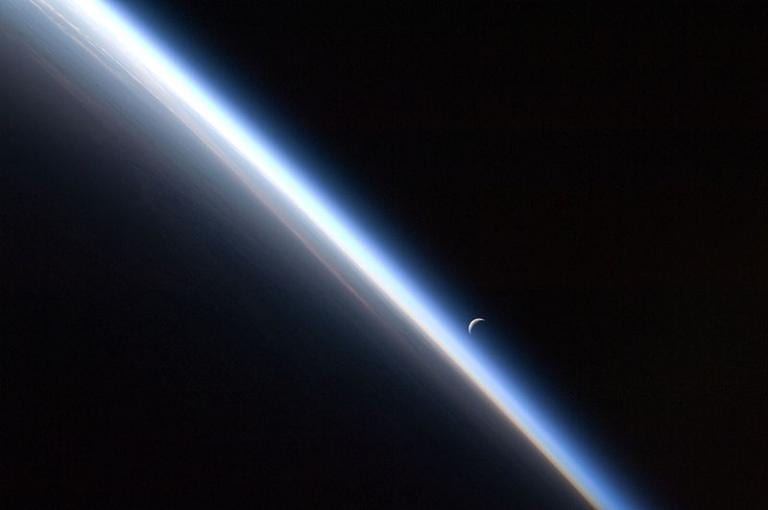
(NASA public domain photograph)
Continuing with some thoughts on the earth’s atmosphere from my previous post on the subject, “The Thin Blue Line (1)”:
Our atmosphere as it exists today probably derives (as our oceans also do) from the “degassing” of the primitive semi-molten earth, supplemented by later additions belched up from volcanoes and emitted by hot springs. The atmosphere of early geologic times was made up of such gases as hydrogen, nitrogen, carbon monoxide, carbon dioxide, water vapor, and various forms of hydrogen chloride. The lighter gases (e.g., hydrogen) presumably escaped. Five hundred miles above the earth, our “atmosphere,” if it can still be called that, is composed of 50% helium and 50% hydrogen.
Somewhat later in our planet’s history, when living organisms developed that were capable of photosynthesis, they provided the oxygen that then permitted animal respiration and eventually the colonization of land, as well as providing the famous ozone layer that shields the earth (and us) from the sun’s ultraviolet radiation.
Evidence for this sequence of atmospheric development can be found, to some degree at least, in Precambrian rocks and a few fossils, which seem to suggest a transition from a largely oxygen-free environment to . . . well, to a free-oxygen environment.
Denser and, thus, heavier gases such as oxygen, carbon dioxide, nitrogen, and water vapor hang low in the current atmosphere, mostly within about three miles of the planet’s surface. They are essential to life. Above roughly three miles over sea level, we humans cannot usually function very well without supplemental oxygen.
Altogether, the gases in the atmosphere serve to insulate the earth by filtering out most cosmic radiation and, as mentioned, most of the sun’s ultraviolet radiation. They prevent large swings in temperature. They also burn up untold millions of meteors before those objects are able to collide with our planet. Again in these ways, they are essential to life.
Fortunately, too, our atmosphere probably deflects or reflects much interstellar “noise” into space. Without that, radio and television broadcasts would be effectively impossible, lost in an impenetrable wall of static. On its “underside,” though, our atmosphere partially reflects (rather than merely transmitting) radio waves, which makes communication by radio possible. Such communication is essential for the Interpreter Radio Show and, thus, for humanity in general.












